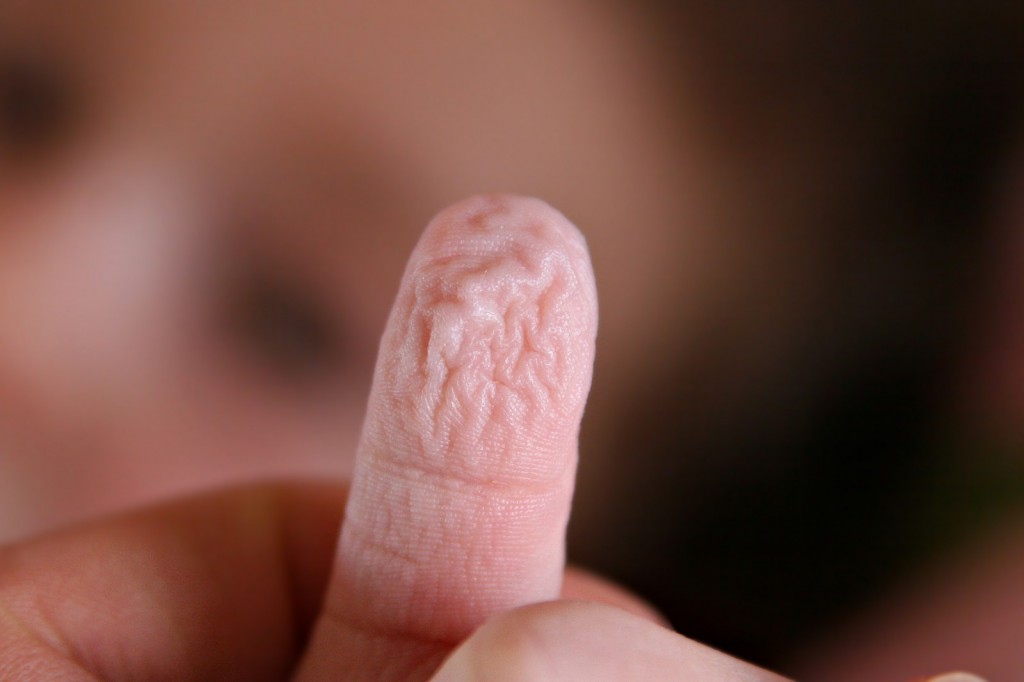Why Our Fingers Wrinkle When Wet

For a long time, the consensus involved absorption. As the theory goes, most things, when exposed to (or submerged in) water for a long period of time, tend to wilt or weaken. If that were to happen to our fingertips, we would probably lose their function temporarily if not permanently — and, of course, experience a huge amount of pain.
Wrinkling stops this. As noted by Wired, the puckered skin retains its cohesiveness, thereby avoiding that outcome. And your skin is not drying out; quite the opposite. It is actually absorbing a relatively large amount of water — Wired calls it a “tremendous” amount — while maintaining its function as the barrier between our other organs and the harsh environment around us.
While this reasoning may be true, it may not be the only reason. A recent study concludes that pruney fingers have an evolutionary component, concluding that our fingers wrinkle so that we can grip things in wet conditions. Anecdotally, that makes a lot of sense — if our hands are submerged in water for a long period of time, there’s a good chance so is the rest of our body. And that means that we may be in distress, unable to get ourselves out of the water and onto dry land. In theory, everything grabbable around us would also be wet, and therefore slick to the touch. Having smooth fingers would make it difficult to grab hold of those would-be anchors; but when our fingers prune, so the theory goes, it is like having a personal set of rain treads.
One really interesting finding which buttresses this theory? If your fingers’ nerves are somehow severed from the rest of your nervous system (and therefore your brain), they no longer prune up in the water. This almost certainly means that the pruning effect is triggered by the brain and is not simply related to absorption.
But other wrinkles (pardon the pun) remain. So far, we have not yet been able to determine whether pruned fingers do, in fact, help us grip wet things better. Also, there is demonstrable evidence of the first theory occurring — blood vessels contracting, skin absorbing water, etc. — which again suggests that there is a lot more going on there than we know.
Bonus fact: If you put raisins in a glass of carbonated water (or, as in this video, Sprite), they’ll bounce up and down. Why? The raisins’ wrinkles capture the carbon dioxide bubbles, which in turn bring the raisins to the top of the glass. The bubbles escape when they hit the surface, so the raisin falls again — only to repeat its travels. A similar thing happens with pomegranate seeds in champagne, as seen here.
From the Archives: Rules of Thumbs: What a thumbs up means.
Related (kind of): “A Wrinkle in Time,” by Madeleine L’Engle. 4.5 stars on almost 1,000 reviews — over 1,000 if you include other versions. Winner of many awards but, keep in mind, it is geared for school children (in fact, it was the subject of my book reports in school at least three times. Please don’t tell my old English teachers). Prices vary based on edition, and it is available on Kindle.

Leave a comment